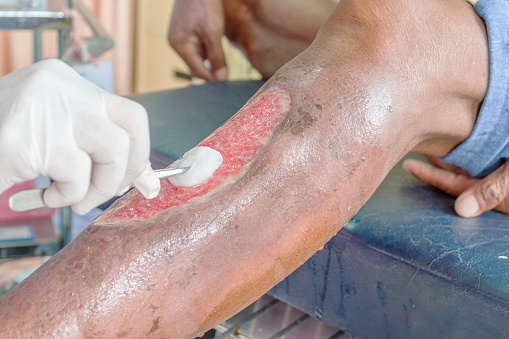Chronic Wounds

Chronic wounds are those that do not progress through a normal, orderly, and timely sequence of repair. They are common and are often incorrectly treated. The morbidity and associated costs of chronic wounds highlight the need to implement wound prevention and treatment guidelines. Common lower extremity wounds include arterial, diabetic, pressure, and venous ulcers. Physical examination alone can often guide the diagnosis. All patients with a nonhealing lower extremity ulcer should have a vascular assessment, including documentation of wound location, size, depth, drainage, and tissue type; palpation of pedal pulses; and measurement of the ankle-brachial index. Atypical non healing wounds should be biopsied. The mainstay of treatment is the TIME principle: tissue debridement, infection control, moisture balance, and edges of the wound. After these general measures have been addressed, treatment is specific to the ulcer type. Patients with arterial ulcers should be immediately referred to a vascular surgeon for appropriate intervention. Treatment of venous ulcers involves compression and elevation of the lower extremities, plus exercise if tolerated. Diabetic foot ulcers are managed by offloading the foot and, if necessary, treating the underlying peripheral arterial disease. Pressure ulcers are managed by offloading the affected area.
A chronic wound is one that fails to progress through a normal, orderly, and timely sequence of repair, or in which the repair process fails to restore anatomic and functional integrity after three months.
- In 2014, wound care for Medicare beneficiaries cost an estimated $28 billion to $96.8 billion.
- A 2012 German study found a 1% to 2% prevalence of chronic nonhealing wounds in the general population.
- Chronic wounds, typically diabetic ulcers, preceded 85% of amputations.
- Some chronic wounds can take decades to heal, thus contributing to secondary conditions such as depression, and can ultimately lead to isolation and family distress. The five-year mortality rate after developing a diabetic ulcer is approximately 40%. Therefore, proper diagnosis and treatment of wounds and management of comorbidities are imperative.
